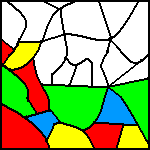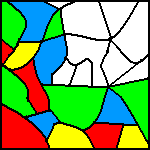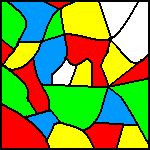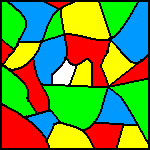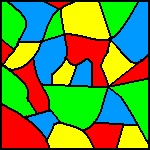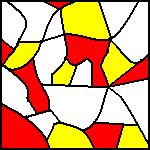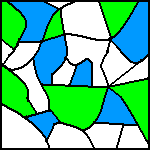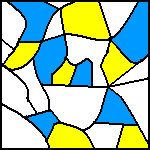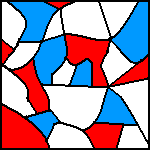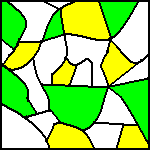5. Adding a new region to an existing map
Here
the method is to try to construct a map of any complexity starting with
a simple map, or even a blank map, and adding regions one at a time.
|
Simple case
Shown below are all the ways in which a new region can be added to a
structure consisting of a region surrounded by three adjacent regions.
The same principles apply to a structure consisting of a region
surrounded by a greater number of adjacent regions.
|
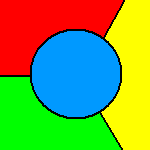 |
|
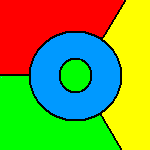 |
|
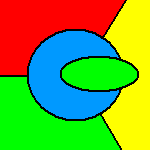 |
1. Start with a structure requiring four colours,
|
|
2. Adding a new region, contained completely within an existing region, requires no new colours.
|
|
3. Extending the new region, across a border to a second existing region, requires no new colours. |
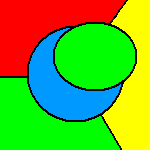 |
|
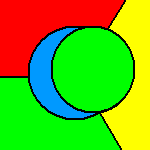 |
|
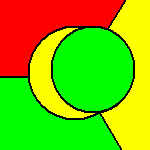 |
| 4. Extending the new region, across a node into a third region, requires no new colours. |
|
5. Extending the new region, up to a second node, means that the first and second regions no longer share a border. |
|
6. Only three colours are now required. |
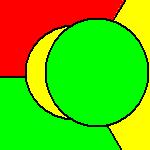 |
|
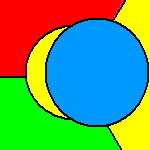 |
|
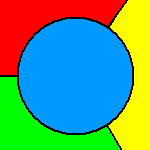 |
| 7. Extending the new region across the second node results in two regions, of the same colour, sharing a border. |
|
8. The colour of the new region has to be changed. Four colours are now required. |
|
9. Extending the new region across the final node returns the structure to the original configuration. |
The crucial Action
The
crucial action is when the new region is extended up to and across the
second node (Steps 5 to 8).The second region becomes separated from the
first region immediately before the new region becomes adjacent to the
third region. Thus, by this action, no more colours are required.
|
